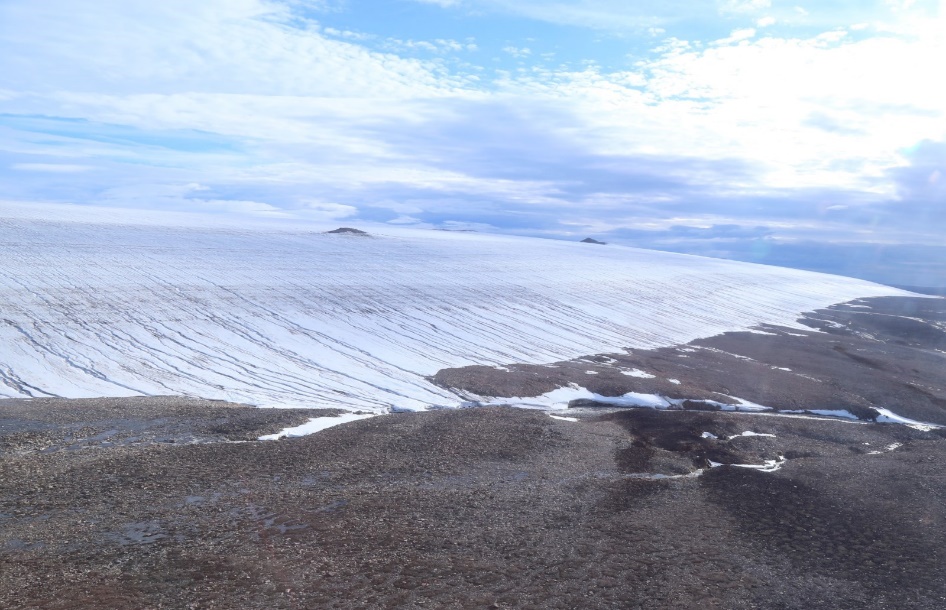 Earth & Space
Earth & Space
Diving into the icy origins of Martian valleys
Mars is nowadays a frozen desert devoid of liquid water, but it was not always like this: giant valleys and canyons on its surface show that at some point in the remote past, water existed on the Martian surface. Trying to understand the origin of these valleys, we found answers in an unexpected place: the plumbing system of ice sheets.

I invite you to use Google Earth and explore Mars. Look at the Martian southern hemisphere, and find an arid landscape littered with fossil valleys. These valleys speak of a remote past, when the red planet had water on its surface. There are thousands of valleys on Mars, they are large, and they look strange, extraterrestrial. The debate over how the Martian valleys originated spans more than 40 years, and has not yet been successfully resolved. Just like river and glacial valleys take different shapes on Earth, the myriad of valley shapes on Mars suggests that many different processes were at play during their formation.
We set out to learn more about how the Martian valleys originated by relating the diverse characteristics of Martian valleys to different formation processes. Just like valleys on Earth, Martian valleys formed through the action of rivers, glaciers, and groundwater erosion. Because rivers and glaciers alone cannot explain the strange shapes of Martian valleys, we added another possibility: water flowing in channels beneath glacial ice. These subglacial rivers are like ‘plumbing systems’ of ancient ice sheets.
We looked at 66 Martian valleys and evaluated whether rivers, glaciers, or subglacial rivers best matched the shape of the valleys we observe on Mars. We did this by analyzing six important characteristics of the valleys: length-to-width ratios; angles between two joining valleys; complexity of the valley network; width of the valleys at origin; and whether the valleys flow uphill. By combining these characteristics, we can use existing models of erosion to find out how these valleys formed. After all, the physics of erosion are the same on Earth as they are on Mars. For example, valleys formed by glaciers are wider and shorter than those formed by rivers. Furthermore, rivers form more complex networks, and subglacial rivers may flow uphill. Combining the use of physical models, observations, and statistical analysis, we were able to classify the different ‘types’ of valleys on Mars, and establish how they formed.
Our classification yielded some interesting results. First, we grouped the valleys with similar characteristics under a similar formation history. Second, we interpreted the origin of each group with physical predictions for how rivers, glaciers, or subglacial rivers should be like on Mars, and we found examples of all these among the Martian valleys. Third, we found that many valleys on Mars formed as subglacial rivers. The shape and characteristics of these particular valleys are very similar to subglacial channels found in the Canadian Arctic and Scandinavia. These channels are the remnants of rivers beneath ice sheets that existed during the last ice age. In total, we found that ancient rivers carved 14 out of 66 Martian valleys studied, and 22 valleys were most consistent with formation as subglacial rivers.
While the discovery of subglacial valleys on Mars is new, the existence of ancient Martian rivers is well accepted. We think our most exiting contribution is in providing an explanation for the origin of the Martian valleys, and explaining why they look so strange. Whereas the presence of subglacial valleys indicates that an extensive ice sheet had to exist on Mars, the presence of river valleys implies that such an ice sheet had to melt as well. This discovery suggests that ice ages or long-term climate change existed on Mars and that Mars slowly transitioned from a warmer into a frozen world.
These results alter our vision of ancient Mars: rivers confined under massive ice sheets may have been largely responsible for the massive Martian valleys. Under the ice, water could have once flowed in rivers and ponded in lakes, maybe even providing the conditions for life to originate or survive, much like Lake Vostok harbors living organisms beneath a kilometer of Antarctic ice.
Original Article:
Grau Galofre, A., Jellinek, A. & Osinski, G. Valley formation on early Mars by subglacial and fluvial erosion. Nature Geoscience 13, 663-668 (2020).Next read: Are planets with oxygen-rich atmospheres rare? by Lewis Alcott , Benjamin Mills
Edited by:
Dr. Rik Voorhaar , Senior Scientific Editor
We thought you might like
Leveraging Earth to study how water formed on ancient Mars
Apr 7, 2021 in Earth & Space | 4 min read by Christopher J. TinoMarsquakes redefine what we tought about a quiet Mars
Feb 13, 2023 in Earth & Space | 4 min read by Hrvoje Tkalčić , Weijia SunMore from Earth & Space
Discovery of the first radiation belt beyond the Solar System
Jan 27, 2025 in Earth & Space | 3.5 min read by Juan Bautista Climent OliverOne million (paper) satellites
Jan 24, 2025 in Earth & Space | 3 min read by Ewan Wright , Andrew FalleVolcanic Ash: A Nutrient Boost for Reef-Building Corals
Sep 18, 2024 in Earth & Space | 4 min read by Frank Förster , Tom SheldrakeAmmonia Energy: A Call for Environmental Awareness
Aug 29, 2024 in Earth & Space | 3.5 min read by Matteo Bertagni , Robert Socolow , Amilcare PorporatoLikely increase in coral thermal tolerance at a Pacific archipelago
Dec 29, 2023 in Earth & Space | 3 min read by Liam LachsEditor's picks
Trending now
Popular topics


